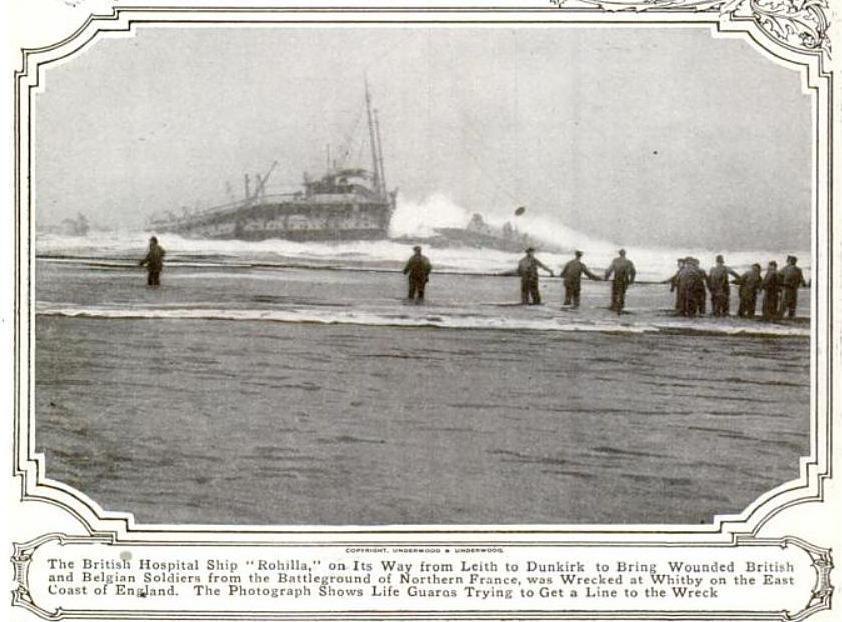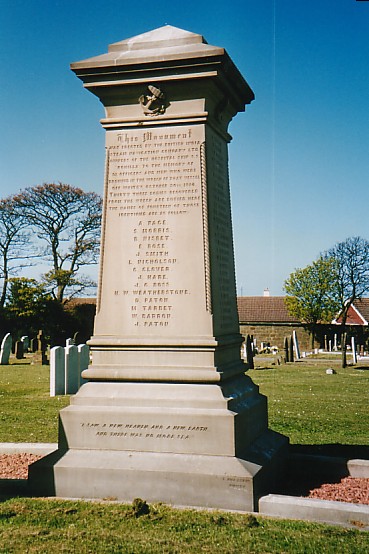Rohilla (7,114 tons gross) was built in 1906 in Belfast by Harland & Wolff. It was called up at the outset of World War I and converted into a naval hospital ship.
Sailing south through the North Sea, at around 4:00 a.m. on 30 October 1914 the Rohilla struck Whitby Rock, a reef at Saltwick east of Whitby. At the time there was a fierce gale and due to wartime blackout conditions no landmarks were visible. Although the ship was only 600 metres from shore, the treacherous conditions of the high seas and storm force winds made rescue difficult.
Rockets with ropes attached were fired from the cliffs, but all missed. The Rohilla had no rockets of her own. Due to the weather conditions Whitby’s lifeboat could not be launched from the harbour, so it was carried by hand over an eight-foot seawall and across rocks so that it could be launched from the foreshore nearest the ship. The five women aboard the ship were the first to be rescued. Seventeen survivors were taken during the lifeboat’s first run, and another eighteen were rescued on its second; however, the lifeboat itself was too badly damaged to continue the rescue.
Six Royal National Lifeboat Institution lifeboats (Bradford, John Fielden, Queensbury, Robert and Mary Ellis, William Riley of Birmingham and Leamington and the Henry Vernon) carried out a rescue operation lasting fifty hours, saving many of the 229 people on board, but 85 lives were lost in the disaster.
Amongst those rescued from Rohilla was Mary Kezia Roberts, who had survived the sinking of RMS Titanic just two years earlier in 1912.
The Empire Gallantry Medal (later changed to the George Cross) was awarded to Major Burton of the Tynemouth lifeboat Henry Vernon for his role in the rescue.
The Gold Medal of the Royal National Lifeboat Institution, the highest honour the institute could award, was presented to Coxswain Thomas Langlands and Coxswain Robert Smith. The Silver Medal, the Royal National Lifeboat Institution’s second highest award, was bestowed on Second Coxswain Richard Eglon, Second Coxswain James’ Brownlee, Lieutenant Bazil Hall RN, and George Peart, who also received £10.
Lloyds Agent, Captain John Milburn, received a letter of thanks and a pair of binoculars. Whitby Police received £10 from the R.N.L.I. and £25 from the owners of the Rohilla. The crews of the lifeboat John Fielden and Henry Vernon got additional cash payments. Captain Neilson was awarded the Bronze Medal of the Royal Society for the Prevention of Cruelty to Animals, for his efforts in the rescue of the ship’s cat.
Images and text courtesy Wikipedia


Leave a Reply